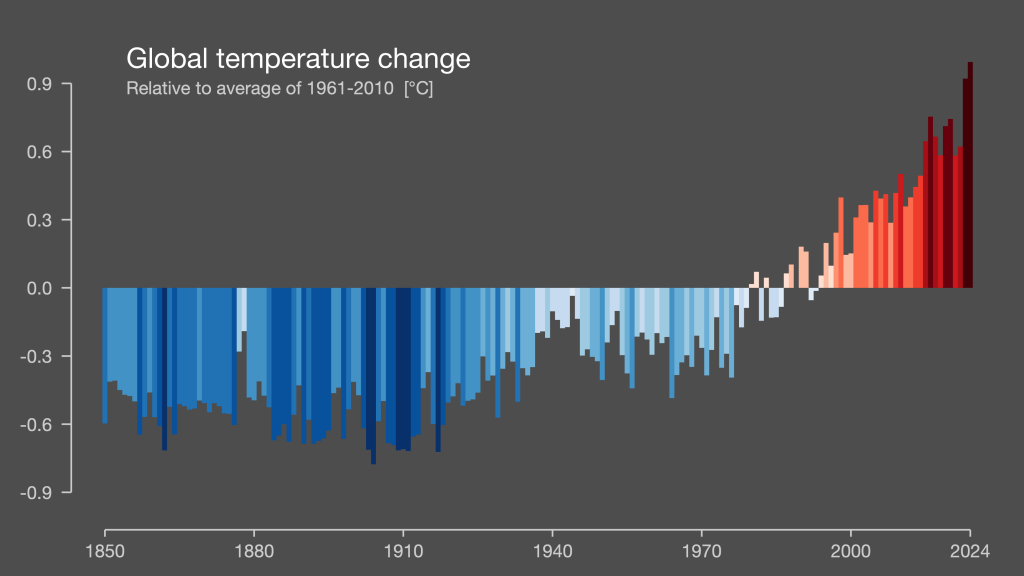Table of Contents
ToggleWhat Exactly is a Heat Wave? Defining the Hot Topic
To truly understand the impact of heat waves, it’s crucial to first grasp what exactly constitutes one. It might seem obvious – a period of really hot weather – but the scientific community and different regions have specific ways of defining this phenomenon. The World Meteorological Organization (WMO) serves as a central authority in this regard, and their definition provides a solid foundation. Generally, the WMO characterizes a heat wave as a period of abnormally hot weather that can stretch from a few days to even months, where both the daytime highs and nighttime lows are unusually elevated for a particular location. More specifically, they often point to a criterion of five or more consecutive days where the daily maximum temperature surpasses the average maximum temperature by 5 degrees Celsius (or 9 degrees Fahrenheit). This comparison is typically made against the average temperatures recorded between 1961 and 1990, a period often used as a baseline for climate studies. This definition highlights that a heat wave isn’t just about hitting a certain temperature; it’s about how significantly the temperature deviates from what’s considered normal for that time of year and that specific place.

However, the WMO’s definition, while widely recognized, isn’t the only one out there. When you start looking at how different countries and even different organizations within countries define heat waves, you’ll find a fascinating variety. For instance, in India, the India Meteorological Department (IMD) takes a slightly different approach. They declare a heat wave if the maximum temperature reaches at least 40 degrees Celsius in the plains or 30 degrees Celsius in hilly regions. Additionally, they consider a heat wave if the temperature deviates significantly from the normal, specifically by 4.5 to 6.4 degrees Celsius. On the other side of the world, the United States’ National Weather Service defines a heat wave as a period of “abnormally and uncomfortably hot and unusually humid weather” that lasts for two or more days. You can see how different these criteria are, reflecting the diverse climates and what people are accustomed to in these regions. Even within Europe, definitions vary. The European State of the Climate 2023, for example, defined a heat wave as at least three consecutive days where both the daily minimum and maximum surface air temperatures are higher than the top 5% of values recorded for that specific day during the 1991-2020 reference period. The duration of what’s considered a heat wave also differs, ranging from just two days in some definitions to five or more consecutive days in others.
One crucial aspect that often gets intertwined with temperature is humidity. Even if the air temperature isn’t exceptionally high, high humidity can make it feel much hotter and significantly increase the risk of heat-related illnesses. This is because our bodies cool down through sweating, and when the air is already saturated with moisture, sweat doesn’t evaporate as effectively. This is why metrics like the Heat Index or apparent temperature are important. They take into account both the air temperature and the relative humidity to give a more accurate representation of how hot it actually feels to the human body. So, while temperature thresholds are important in defining heat waves, the inclusion of humidity provides a more comprehensive understanding of the potential danger.
The Uncomfortable Link: How Climate Change Fuels Heat Waves
While natural weather variations have always led to periods of hot weather, the increasing frequency and intensity of heat waves we’re witnessing globally are undeniably linked to the broader phenomenon of climate change. The fundamental science behind this connection lies in the greenhouse effect. Human activities, primarily the burning of fossil fuels, release vast amounts of greenhouse gases like carbon dioxide into the atmosphere. These gases act like a blanket, trapping heat that would otherwise escape into space, leading to a gradual increase in the average global temperature. This overall warming trend doesn’t just mean slightly warmer summers; it raises the baseline temperature, making extreme heat events like heat waves more likely to occur and more intense when they do. Think of it like this: if the average temperature is already higher, then when weather patterns conducive to heat waves develop, the resulting temperatures will reach even greater extremes.
The data clearly supports this link. Since the mid-20th century, observations around the world show a significant increase in both the number of heat wave events and how long they last. We’re not just feeling hotter; the measurements confirm it. Recent years have seen numerous record-breaking heat waves across the globe, from Europe to Asia, highlighting the escalating nature of this problem. Furthermore, the number of people exposed to these extreme heat events has also increased substantially, putting more and more populations at risk. This isn’t just a coincidence; the scientific consensus is that this upward trend in heat wave frequency and intensity is a direct consequence of the warming planet.
Beyond Climate Change: Other Factors Contributing to Heat Waves
While climate change acts as a major amplifier for heat waves, it’s not the only player involved. Several other meteorological and geographical factors can contribute to the formation and intensity of these extreme heat events. One of the primary drivers of heat waves is the presence of strong and slow-moving high-pressure systems in the atmosphere. These systems, often referred to as “heat domes” , act like a lid on the atmosphere, trapping warm air near the surface and preventing it from rising and dissipating. This leads to a build-up of heat over several days or even weeks, resulting in a prolonged period of high temperatures. Sometimes, these high-pressure systems get stuck in place due to atmospheric blocking patterns, further prolonging the heat wave.
Another significant factor, particularly in urban areas, is the urban heat island (UHI) effect. Cities tend to be significantly warmer than their surrounding rural areas, sometimes by as much as 5 to 10 degrees Celsius. This temperature difference arises because urban environments have a lot of concrete, asphalt, and buildings, which absorb and retain heat from the sun much more effectively than natural landscapes. Additionally, cities often have less vegetation, which normally provides a cooling effect through shade and evaporation, and altered wind patterns can also contribute to the UHI effect. As a result, during a regional heat wave, cities can become even hotter, posing a greater risk to the health and well-being of their inhabitants.
Finally, the condition of the land surface itself can play a role in the intensity of a heat wave. When the soil is dry, for example due to drought conditions, less of the sun’s energy goes into evaporating moisture, and more of it is used to heat the air directly above the ground. This can create a feedback loop where dry conditions exacerbate the heat, and the intense heat further dries out the land. This interaction highlights how different environmental factors can work together to amplify the effects of a heat wave.
The Ripple Effect: Wide-Ranging Impacts of Heat Waves
Heat waves are more than just an inconvenience; they have far-reaching and often devastating consequences for human health, the environment, and the economy. Perhaps the most immediate and concerning impact is on human health. Heat waves are a leading cause of weather-related mortality, claiming thousands of lives each year. Exposure to extreme heat can lead to a range of heat-related illnesses, from relatively mild conditions like heat cramps and heat exhaustion to the life-threatening heatstroke. Heatstroke is a medical emergency characterized by a dangerously high body temperature, often accompanied by symptoms like red, hot, and dry skin, a rapid pulse, and even dizziness or confusion. Heat exhaustion, while less severe, can still be dangerous if left untreated, with symptoms like fatigue, weakness, dizziness, headache, and nausea. Furthermore, extreme heat can worsen pre-existing health conditions, particularly cardiovascular and respiratory illnesses. Certain populations are particularly vulnerable to the health impacts of heat waves, including the elderly, young children, pregnant women, people with chronic diseases, outdoor workers, and those with limited access to cooling.
Beyond the direct threats to human health, heat waves also have significant environmental consequences. The hot and dry conditions that often accompany heat waves create an increased risk of wildfires. These fires can devastate natural ecosystems, release harmful pollutants into the air, and further contribute to climate change. Heat waves also put a strain on water resources, exacerbating drought conditions and leading to water shortages. The agricultural sector is also heavily impacted, with high temperatures leading to reduced crop yields and livestock deaths. The delicate balance of ecosystems can be disrupted as well, affecting biodiversity and potentially leading to shifts in species distribution.
The economic costs associated with heat waves are also substantial. Reduced labor productivity is a significant concern, as people struggle to work effectively in extreme heat. Infrastructure can suffer damage, such as roads buckling under the intense heat. The increased demand for air conditioning puts a strain on power grids, leading to power outages and blackouts. Healthcare systems also face increased burdens as they deal with a surge in heat-related illnesses. These economic impacts can ripple through various sectors, affecting everything from agriculture and construction to tourism and transportation.
Marine Heat Waves: The Hidden Danger in Our Oceans
While we often focus on the heat waves that scorch the land, our oceans are also experiencing similar extreme temperature events known as marine heat waves. These are defined as prolonged periods of unusually warm sea surface temperatures. Just like their terrestrial counterparts, marine heat waves are driven by a combination of oceanic and atmospheric conditions, including phenomena like El Niño and changes in ocean currents, as well as atmospheric blocking patterns. And, just as with land-based heat waves, climate change is playing an increasingly significant role in their occurrence and intensity.

The consequences of marine heat waves can be severe for ocean ecosystems. They can lead to coral bleaching, which can decimate coral reefs and the diverse marine life they support. They can also disrupt fisheries, causing declines in fish populations and impacting the livelihoods of those who depend on them. Furthermore, marine heat waves can cause shifts in species distributions as marine organisms try to find cooler waters. In some cases, they can even prolong the period during which sea surface temperatures are warm enough to support hurricane activity, potentially extending the hurricane season. While perhaps less visible to the general public than heat waves on land, marine heat waves represent a significant threat to the health and biodiversity of our oceans.
Tracking the Trend: How Heat Waves Are Changing Over Time
Looking at the historical data, the trend is clear: heat waves are not only becoming more intense but also more frequent and longer-lasting in many parts of the world. We’re seeing more of these extreme heat events occurring each year, and when they do occur, they tend to persist for longer periods. This increasing duration and frequency suggests a significant shift in our climate patterns, and it has profound implications for how we need to prepare and adapt. It’s no longer just a case of dealing with occasional hot spells; we’re facing a future where prolonged periods of extreme heat are becoming more common.
Another concerning trend is the shift in the timing of heat waves. In some regions, heat waves are starting to occur earlier in the spring and lasting later into the fall, effectively extending the heat wave season. For example, while heat waves in India typically occur between March and June, there have been instances of them extending into July. This shifting timing can catch people off guard. If a heat wave occurs earlier in the year, before people have fully acclimatized to warmer temperatures or taken necessary precautions, the health risks can be even greater. Similarly, a late-season heat wave might find people less prepared and less likely to take the necessary steps to stay safe.
Staying Safe When Temperatures Soar: Practical Tips for Heat Preparedness
Given the increasing threat of heat waves, it’s more important than ever to know how to stay safe when temperatures climb. On an individual level, there are several key steps you can take. Staying well-hydrated by drinking plenty of fluids is crucial, even if you don’t feel thirsty. It’s also important to avoid strenuous activities during the hottest parts of the day and to seek out air-conditioned environments whenever possible. If you don’t have air conditioning at home, consider visiting public places like shopping malls or libraries that do. Wearing light-colored and loose-fitting clothing can also help your body stay cooler. While fans can provide some relief, they are less effective when the temperature is above 90 degrees Fahrenheit. It’s also vital to monitor weather forecasts and heed any warnings or advisories issued by local authorities. And perhaps one of the most critical safety tips is to never leave children or pets unattended in parked vehicles, as temperatures inside can rise to dangerous levels very quickly, even on mild days.
Beyond individual actions, there are also important strategies that can be implemented at the community and urban planning levels. Implementing heat-health action plans and early warning systems can help to alert the public about impending heat waves and provide guidance on how to stay safe. Creating designated cooling centers where vulnerable individuals can seek refuge from the heat is also essential. In urban areas, increasing green spaces and planting more trees can help to combat the urban heat island effect by providing shade and promoting cooling through evapotranspiration. Promoting energy efficiency can help to reduce the strain on power grids during periods of high demand for cooling. Addressing the challenge of heat waves requires a comprehensive approach that involves both individual responsibility and collective action.
The Debate Around Naming Heat Waves: Does it Help?
Interestingly, there’s an ongoing discussion about whether we should start naming heat waves, similar to how we name tropical cyclones. The idea behind naming is often to raise public awareness and make the threat feel more tangible. However, there are also concerns that naming heat waves might not be the most effective way to address the issue. Some argue that it could potentially distract from the more important messages about who is most vulnerable to heat and what actions they should take to protect themselves. The focus, they contend, should remain on educating the public about the health risks associated with extreme heat and promoting preparedness strategies rather than on the name of the event itself. Given the complexities in defining heat waves and the localized nature of their impacts, the debate about naming is likely to continue.
The Future is Hot: What to Expect as the Planet Warms
Looking ahead, the scientific consensus indicates that with continued global warming, we can expect a further increase in the intensity, frequency, and duration of heat waves across the globe. Projections suggest that if greenhouse gas emissions are not significantly reduced, we could see substantial increases in both daily high and low temperatures by the middle and end of this century. This means that the extreme heat events we’re experiencing now are likely to become more common and more severe in the years to come, posing significant challenges for public health, infrastructure, and the environment. The future is indeed looking hotter, underscoring the urgency of addressing climate change and implementing effective adaptation measures.

In Conclusion: Understanding and Addressing the Heat Wave Challenge
Heat waves are a complex and increasingly dangerous phenomenon, intricately linked with our changing climate. Defining them varies across the globe, reflecting local conditions and vulnerabilities. While natural weather patterns play a role, the overwhelming scientific evidence points to climate change as the primary driver behind the rising frequency, intensity, and duration of these extreme heat events. The consequences are far-reaching, impacting human health, the environment, and economies worldwide. As we look to the future, it’s clear that heat waves will become an even greater threat. Therefore, a multi-faceted approach that includes individual preparedness, community-level strategies, and decisive action to mitigate climate change is essential to protect ourselves and future generations from the scorching reality of a warming world.
Frequently Asked Questions (FAQs)
- What’s the difference between a heat wave and just a really hot day? A heat wave is typically defined as a prolonged period of abnormally hot weather, usually lasting for several consecutive days. It’s not just about one exceptionally hot day, but a sustained period of high temperatures that are significantly above the average for that area and time of year.
- Is every hot summer a sign of climate change? While a single hot summer doesn’t definitively prove climate change, the increasing frequency and intensity of heat waves over the past few decades align with the projections of a warming climate. Climate change makes extreme heat events more likely and more severe.
- Why are cities so much hotter during a heat wave? Cities experience the urban heat island effect, where materials like concrete and asphalt absorb and retain more heat than natural landscapes. This, combined with less vegetation and altered airflow, can make cities significantly hotter than surrounding rural areas during a heat wave.
- What are some of the long-term effects of repeated heat waves on the environment? Repeated heat waves can lead to increased risk of wildfires, prolonged droughts, strain on water resources, reduced agricultural productivity, and negative impacts on biodiversity and ecosystems.
- Besides drinking water, what are some other ways to stay cool during a heat wave? Besides staying hydrated, it’s important to seek air-conditioned environments, avoid direct sun exposure, wear light and loose clothing, take cool showers or baths, and limit strenuous activities during the hottest parts of the day.






